Our thoughts have the power to transform our reality.
The Healing Practice of Pratipaksha Bhavanam
Vitarka badhane pratipaksha bhavanam – Respond to negative thoughts and patterns by thinking and doing the opposite.
If you’ve followed Tasty Yummies for sometime, you are aware that my yoga practice has played a very integral role in my healing and my health, along with my journey toward self-love and self-confidence. I jokingly say that yoga is the gateway drug that came into my life, rocked me and changed me forever – the “drug” that got me on the path to healing. But in full honesty it truly was the stepping stone that brought me to a place where I could finally prioritize my health and from a totally non-ego centered approach, it allowed me to place ME and my happiness above all else. Yoga was the first introduction I had to learning to love and celebrate my body, to trusting myself and most importantly, to knowing that I was actually worthy of being happy, vibrant and well.
It was sometime in 2006 that I first stepped onto my yoga mat, and while I didn’t know this at that time, it was that first unrolling of my mat that fully changed the trajectory of my life moving forward. It was the first time that I made a choice to prioritize my self-care above all else, to give myself permission to fully love myself and to trust that what lied ahead, while intensely challenging, would make for a better version of me.
My yoga practice has evolved greatly over the years. From a daily, rigid, before dawn, self-led mysore practice, to group ashtanga practice, to sweaty vinyasa classes anywhere and everywhere I could take them in, from coast to coast. A few years ago my personal practice eventually reached a place that I was yearning for more and it was then that I received my 200-hour and then 500-hour certification to teach, which I used to host retreats and teach regular classes, publicly and privately. These days, my personal yoga practice is much more private and intimate, with a far less stringent, regimented approach.
While I don’t have a scheduled 90 minute practice daily anymore, yoga still seeps into every single one of my days, even if just by way of the philosophies and methodologies inspiring my approach to daily living. Often it’s the practice of conscious breath work in a stressful moment, or quite literally physical stretches prior to or just after lifting heavy weights or having a rigorous workout of some kind. Some days I make my way to the beach to flow. Often I don’t. I find myself, most days, without consciousness, creating a symphony of breath and movement when I need it most or finding that beautiful balance between effort and steadiness in all aspects of my living. There may not be any greater constant in my life than the practices I have cultivated through yoga.
Throughout my yoga teacher training in 2014, I had a great many lightbulb moments. Literally open mouth “Aha!” moments. Realizations not just in what my body and mind were capable of, but rather in recognizing the control that I had unknowingly harnessed through my practice over the years up to that point. The control of creating my own happiness on the mat and in my life. There were beautiful practices that I had cultivated, unconsciously, which greatly contributed to changing me and much of it finally had explanation with these teachings. I could finally put words and thoughts to them and almost tangibly hold them in my hands so that I could study, cultivate, practice and share them with others.
Studying the yoga sutras and more specifically, Pratipaksha Bhavanam, were probably the most eye-opening aspects of my teacher training and to this day, despite my practice and my teaching career having changed drastically than what I ever could have imagined, they continue to provide daily practices and inspiration for a better life.
Yoga at 8,839 feet?
It was at the very top of Half Dome mountain on a trip to Yosemite last week, at the end of the most intense and rigorous hike (and experience) of my life, after facing my biggest fears and heading head on into place of great discomfort – that I had a great moment of true revelation! It was on top of that mountain, while sobbing in pure pride for what I had just accomplished, that I had the great realization that it was my yoga and the practice of Pratipaksha Bhavanam that got me through and to the top of that mountain that day! Both literally in the actual hike to the peak, but also the years of healing and transformation that led me to even being able to take that journey to be there, in the first place.
In every moment of self-doubt on the journey that day, in every intense thought of great fear, in every question of “But, what if I fall?” I had the unconscious ability to tap into this important practice and change both the dialogue and the outcome. I wouldn’t allow it to continue, I honored it in the moment, I expressed gratitude for it’s teachings and it’s purpose, then I shut that shit down and then literally heard the words – “Oh, my darling, but what if you fly?” (Erin Hanson)
The Yoga Sutras of Patanjali
Of all the great many things I learned from my teacher James Brown during my yoga teacher trainings, most important was the great value in applying the philosophies of yoga, both on and off the mat. The Yoga Sutras of Patanjali are widely regarded as the authoritative text on yoga, often used to guide contemporary yoga practices. In our time training to be teachers we spent a great deal of time studying the sutras, not so much to be traditionalists but more to have the opportunity to connect the practice with the origin of the teachings and for us, to in turn be effective in teaching others, no matter what their personal approach to the practice of yoga. At the heart of their instruction the sutras teach that each practice is as unique as the individual. (Pretty parallel to my approach to health, eating and wellness as a whole, huh?).
The system that Patanjali created has all the parts you need to know for how to make your yoga practice work. The sutras are not just for contemplating your practice on the mat. The sutras are also highly effective for putting to practice and to the test in every facet of your life. In your work and in your play time, in your roles as a partner, friend, parent, student, boss, co-worker, etc.
At it’s most simple, the Yoga Sutras are presented as a guide, a single stream of logic for refining the mind so one can reach the highest state of concentration and focus. This state is a means to an end, it leads to a clearer perception and the ability to know the true Self, which ultimately results in independence from suffering.
Pratipaksha Bhavanam – Yoga Sutra 2.33
For me (and I know for many of us), negative self talk, harmful, self-destructive words and behavior, talking myself down and out of my greatest potential – these have long been my greatest struggles and my biggest road blocks to success, to healing, to being happy and well. There was a time in my life that I would fully talk myself out of anything I wished to accomplish, before I ever even began to attempt it. I had the negative dialogue fully dialed in. I had a incredible skill for finding a million things wrong with me, my work, my body, my life, to find the worst possible potential outcomes for any new possible experience or venture, as a protection mechanism for avoiding failure – all of which as you can imagine made it quite hard to love myself, to trust myself and to ever move from a place of love, rather than from fear.
Much like willingly and knowingly consuming toxic, junk-filled foods that we are aware are quite destructive to our body, holding onto negative, harmful thoughts, whether they be the terrible words we speak to ourselves, the fears that we allow to dictate our actions or the impressions of the words we take in from others – these always result in discomfort and pain. The pain and the “bloating” of anger, fear and stress welling up inside of us are no different from that of an overindulgence of harmful foods, drugs, drinks, etc.
I think we can all recognize that all of these actions can be traced back not from choices made of love or from the need to nourish and feed ourselves and our souls, but rather to seek comfort in the habitual pain-inducing patterns that we know. These harmful places we continue to return to comfortably dwell, even in their destruction, because it’s familiar, it’s easy and it’s what and who we have always identified with.
Vitarka badhane pratipaksha bhavanam
loosely translates to:
Respond to negative thoughts and patterns by thinking and doing the opposite.
(translated by James Brown)
Pratipaksha bhavanam is quite simply the practice of cultivating the opposite, the contrary, when it comes to unneccessary harm.
By cultivating the opposite, a positive thought, in the thick of turbulence, emotional, mental or otherwise, we are paving a new way toward self healing. This may sound relatively remedial, but in it’s simplicity you will find effectiveness, function and a ritualistic practice that is sustainable throughout many facets of life.
In the midst of painful and destructive thought patterns, this practice of stopping the harmful habits in the moment is also an opportunity to reflect. A time to acknowledge the thought, the action, the habit and instead choose to move your thoughts to a place where you feel safe, peaceful, calm and loved – without attachment to the outcome.
According to Patanjali, the reason for harmful behavior is avidya: ignorance of the true-self. (Yoga Sutra 2.32)
Pratipaksha bhavanam is also reflecting on the truth that harmful acts and thoughts – whether done or approved of, whether incited by greed, anger or confusion, whether mild or intense – these are based on ignorance and cause pain.
With this practice we replace anger with compassion, violent thoughts with peaceful ones, hate with love, fear with courage, pain into joy and even simply just general feelings of tension and stress with a sense and approach of relaxation and contentment.
I think it’s important to note that we can all agree that cultivating love in a time of extreme anger can absolutely be beyond challenging if not down right impossible. It’s not to say this practice should always be taken quite so literally. The word opposite can also be used to suggest that rather than going into, or getting caught up in the anger, that instead we simply move away from it, in the opposite direction, which is not quite the same as saying we should cultivate love. We consciously move away from the entanglement of the negative. By moving away, we naturally experience the love.
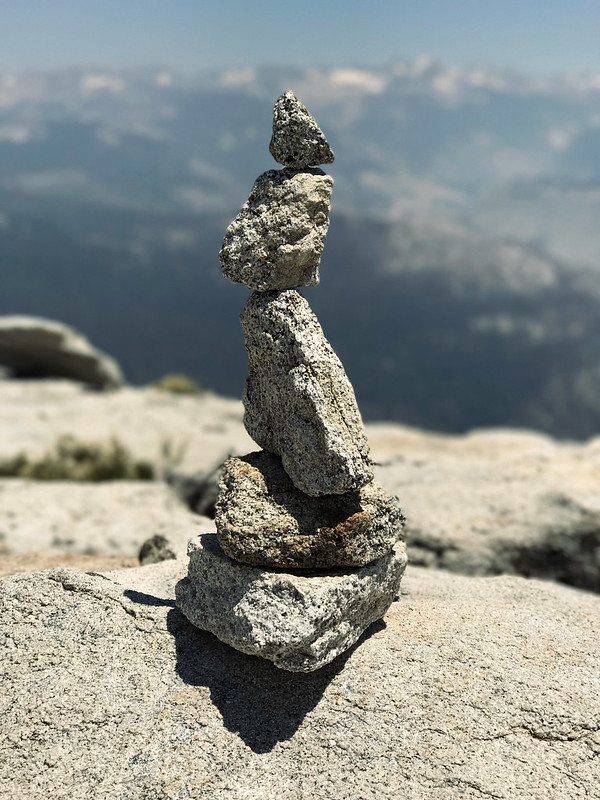
Practice
With consistent practice and dedication, the healing powers of this practice allows us to heal through self-realization and active transformation of our thoughts and our spirit. At our core, in our natural state we are all LOVE. We are peace, compassion and contentment. When we use ritualized practices to harness our efforts we can align ourselves with these principles more readily and move into a deeper level of grace and consciousness that will extend into all areas of our lives and the lives of the people we encounter as a result. Our experiences are richer and our days fuller and more meaningful.
Try this:
The next time you find yourself plagued and troubled with a chronic, habitual negative thought or emotion, find the space to just take a moment for this practice. You can simply practice just stopping the negative self-talk or emotion and cultivating the opposite words or approach, moving in the opposite direction away from that emotion, but I find at first a very conscious and focused approach to the practice to be most effective. Eventually with time and practice, just a few deep breaths and a quick call upon the practice (often without even consciously doing so, as in my recent mountain climbing excursion), this will provide the space for clearing and for great change and shifts.
Find somewhere quiet and begin in a comfortable seated position. Sit upright with a straight back and an open heart. Placing your hands in an open position on your lap. Close your eyes. Focus on the negative emotion, thought or experience. The fear, the pain or the words that are repeating, allow them to fully come into your consciousness. Sit with it. Breath into it. Allow the memory of that pattern to seep into your cells and permeate every corner of your being. Really feel it and acknowledge what comes up with it.
As you begin to let go of the visualization of this negative pattern, breath deeply and slowly. Really focusing on each inhalation and exhalation. Counting the breath to match the length of the exhales to that of the inhales. Visualize an actual abrupt stop to the movement of this harmful behavior, see the release as you begin to visualize the opposite action or moving in the opposite direction away from it.
Take a moment to consciously be aware of what a blessing it is to be alive. Find gratitude for the abundance you are blessed with each and every day. Honor the journey that has brought you to where you are right now. Find grace and compassion in each and every single inhale and exhale. Find love for the precious life form that is guiding you through this Universe. Fill your body with love and light, abundant gratitude.
Honor that each inhale is a precious gift, a moment to cleanse. Each exhale an opportunity to release and let go, transforming the energy of these negative thoughts and patterns, creating space and opportunity for healing.
Sit for a few minutes and honor the peace that this practice has cultivated.
Bring your awareness to your heart, placing your palms over your chest in an embrace over the center of your love and devotion. Both now and with deep conscious breaths in any troubling or challenging moment, know that you are limitless. Remember this version of your higher self that you cultivated through this practice, remember who you truly are at your essence and that you always have the power to make great transformations in any moments, with any thoughts, by using your inhales to come back home to your soul and the exhales to release and heal.

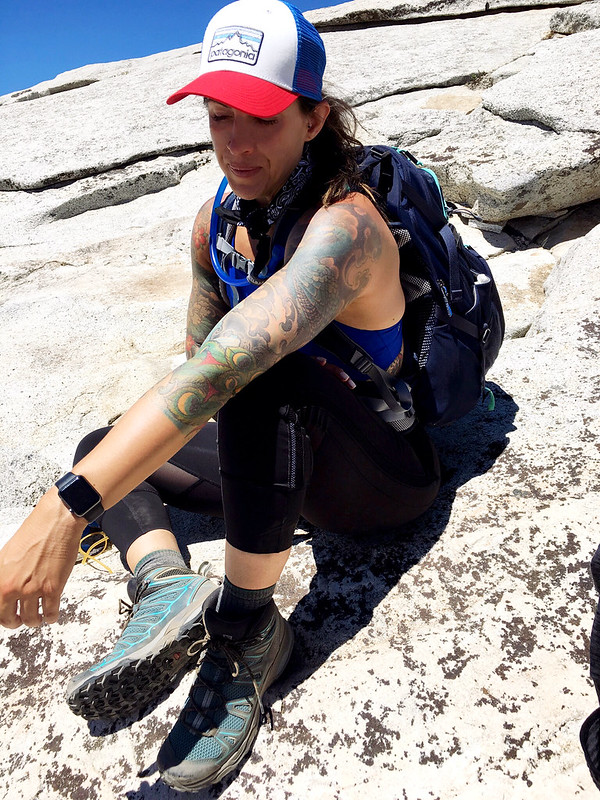
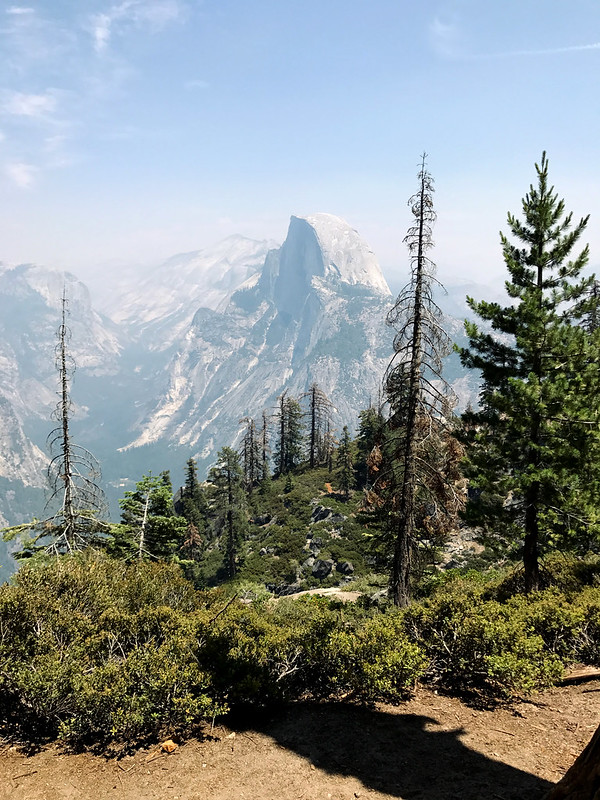

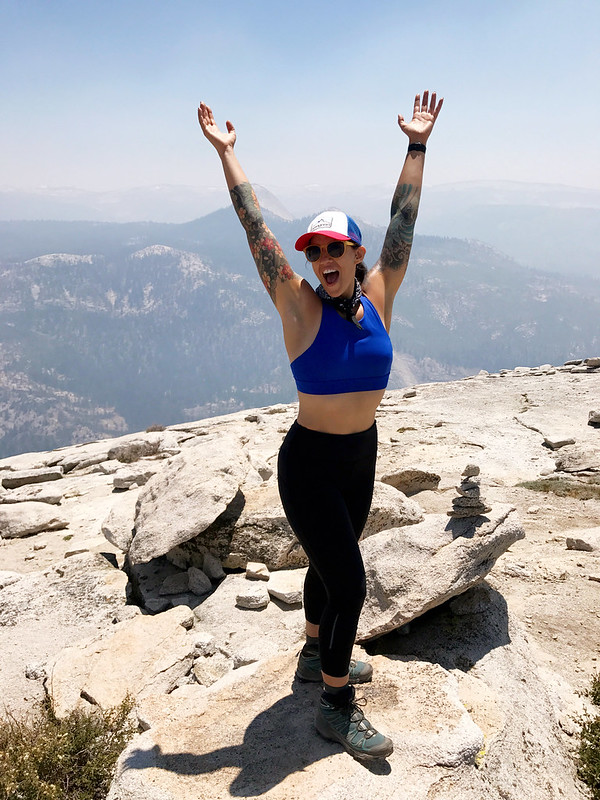






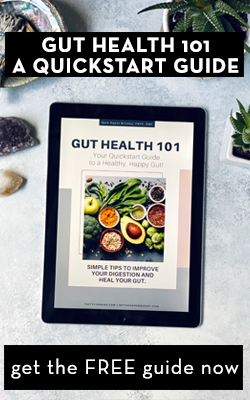




5 Responses
Beth,
As I’m reading this I continued to say “yes….. YES THAT’S MEEEE”. The sabotaging anything an every thing just because I’m afriad of failing. I became a health coach almost 3 years ago and in the past year I have just let it fizzle out. It’s not because I didn’t like it, I guess I just felt like I wasn’t good enough and I wasn’t perfect so why should I be giving advice on how to live healthy. Thank you for opening up and being so candid about your struggles and proving to me that even the “health” people that I look up to struggle too. It’s the name of the game I guess and we just have to go ahead and jump and allow ourselves to fly not fall:)
Congratulations on making it up half dome! Congratulations on getting to the mental and physical point that you can do such a great endeavour! Lovely photos and thanks for sharing your experience and the benefits of yoga and pratipaksha bhavanam.
I have an odd question for you that I have been meaning to ask for a while, but this article brought to the forefront for me. What do you think of tattoos? I know you have many of them, but have your thoughts on them changed since learning to love yourself and take care of yourself better? I ask because for me a tattoo is harming one’s skin, inserting harmful dyes and chemicals onto one’s body and desecrating the beautiful skin that we are blessed to have and which is an integral part of one’s health and body. I don’t mean this in a judgmental manner at all and I hope I do not offend you. I just truly want to understand and since you wrote of many of the elements of self-care and self-love that I think this brings up for me, I wanted to ask if you have changed how you feel about tattoos or if not, how you reconcile the two. I am very health conscious and having read about tattoo ink containing carcinogens, multiple heavy metals and preservatives and other toxic ingredients, I can’t reconcile eating healthy, while permanently injecting these types of chemicals into the body. Maybe there are “better” inks, but even the best are surely not made with beet juice; for them to be so permanent, they must at least contain the kinds of dyes and chemicals one would probably not even want to use in regular temporary make-up. Even if they were 100% healthy, I wonder how affecting the skin cells on a large part of one’s body affects the integrity of the skin and its functions in the body. Visually, although I see the beauty of a good design, I find it says “my skin needs adornment”, as if “I do not find it beautiful enough in its natural state”. On an intuitive level, I feel that tattoos are a currently cool way of self-harm and it is both painful and self inflicted and harms the body (even if it heals, initially you are damaging skin cells). When I see someone with them I worry that there is a lack of self-love that has gone to the extent of disfiguring one’s body and a way of showing that to the world. I wonder if it not a subconscious way of showing the world “I hurt!” (inside, but this is a way of expressing it externally).
I share this with you because I truly want to understand your view on this issue and also to alert you in case you are not aware of the chemicals and also in case you have not thought of the psychological aspect of it. I will even go on a complete limb here and throw this out there – the kidneys and skin are extremely connected -they are both detoxification organs and it is known that when the skin can not detoxify itself (e.g after a burn) the kidneys become overloaded and when the kidneys dont work well, sometimes people get a skin rash. Could there be any link with the quantity of tattoos you have and the auto-immune kidney disease you are trying to heal from? As you know, Western medicine is far from knowing everything about the links to various things, especially when it comes to causes of auto-immune diseases. I know this is completely out there, but since tackling my own auto-immune disease, I have learned we often must think outside the box. Incidentally, from a psychological perspective, auto-immune disease has also been linked by some to attacking oneself mentally (lack of self-love) coming out in a physical way. When I first heard that, it made so much sense to me, as I am quite hard on myself. I have learned myself that learning to stop being overly critical/attacking oneself is key to healing from an auto-immune disease. Wishing you all the very best. I truly hope I do not offend you in bringing these things up.
Hi Beth
First of all I want to apologize for the comment prior to mine, she appears to have missed the point. I loved this post and especially needed it today. My yoga practice has gone by the wayside due to a busy life. I miss it so much. This morning while dealing with a cranky, teething toddler who is suddenly up several times a night again, I was almost to the point of a breakdown. This article, which I saw last night but hadn’t read yet, really reminded me what I need to be doing at times like this rather than gulping down coffee and miserably muddling my way thru. I’m going to meditate now. Thank you❤️
Beth, you are so wise and loving. This post meant a lot to me, and I’ll be taking so much of what you wrote with me from now on–the lessons, the loving kindness, the self-nurturing. Thank you for being you <3
On another note, I'd argue that tattoos may indeed be an expression of self-love and a recognition and acceptance of one's true self in each step of life's changing journey.
Andie, thank you so much for your kind comment and for all that you are and share with the world. I am so happy our paths crossed earlier this year. Thanks for reading and taking the time to respond. And I agree with you, my tattoos were definitely part of my journey to self love and a big part in my body acceptance and just being me 🙂 Thanks again girl xo